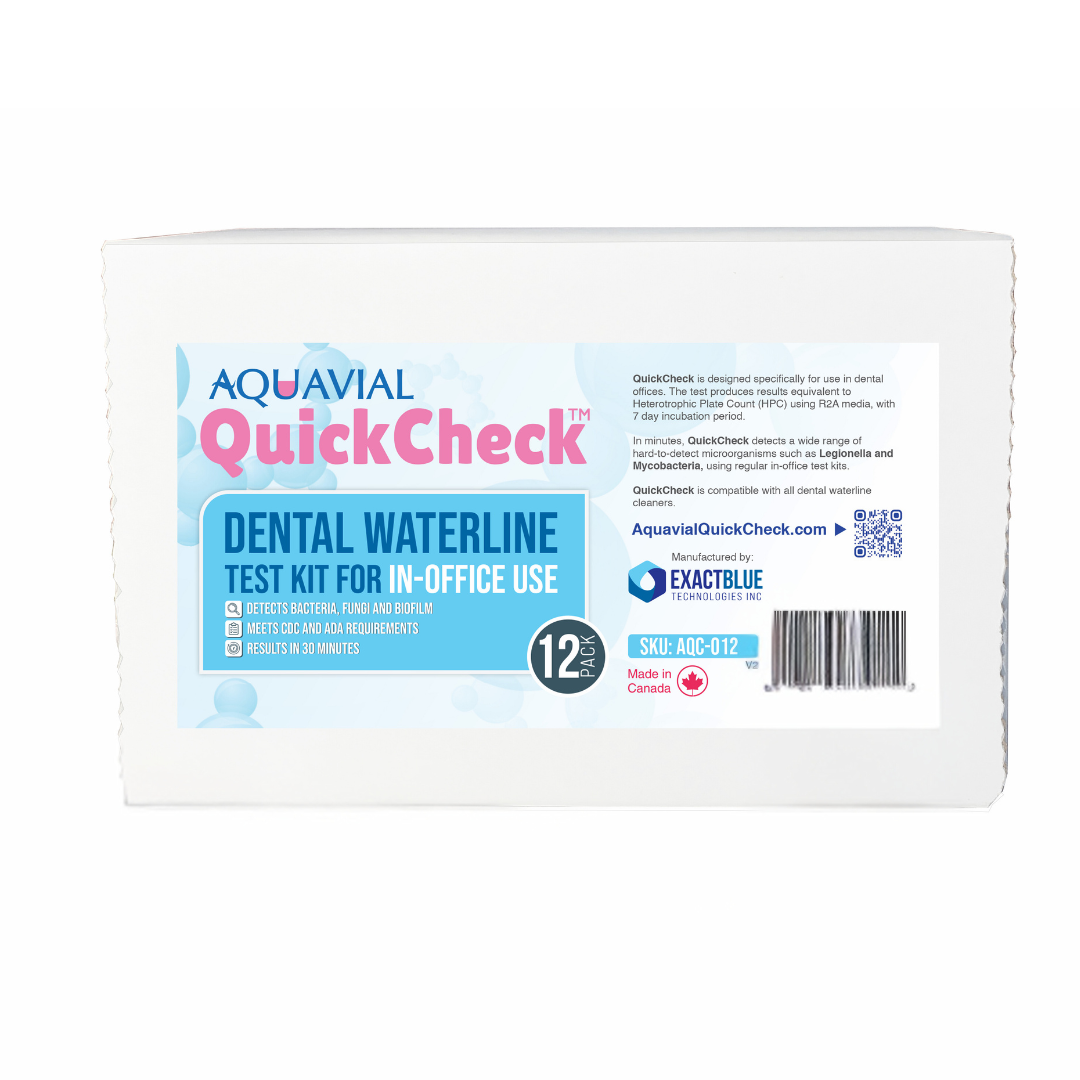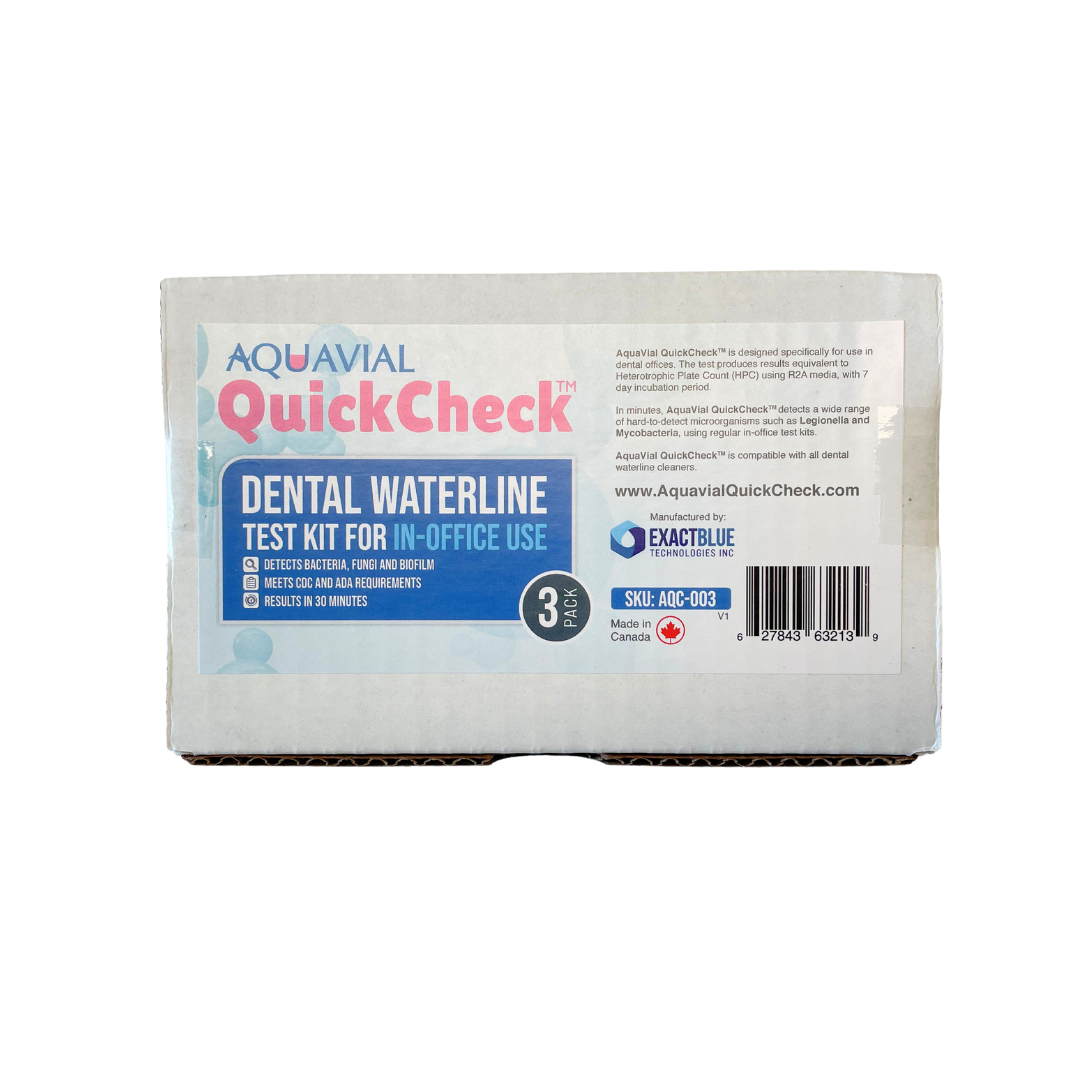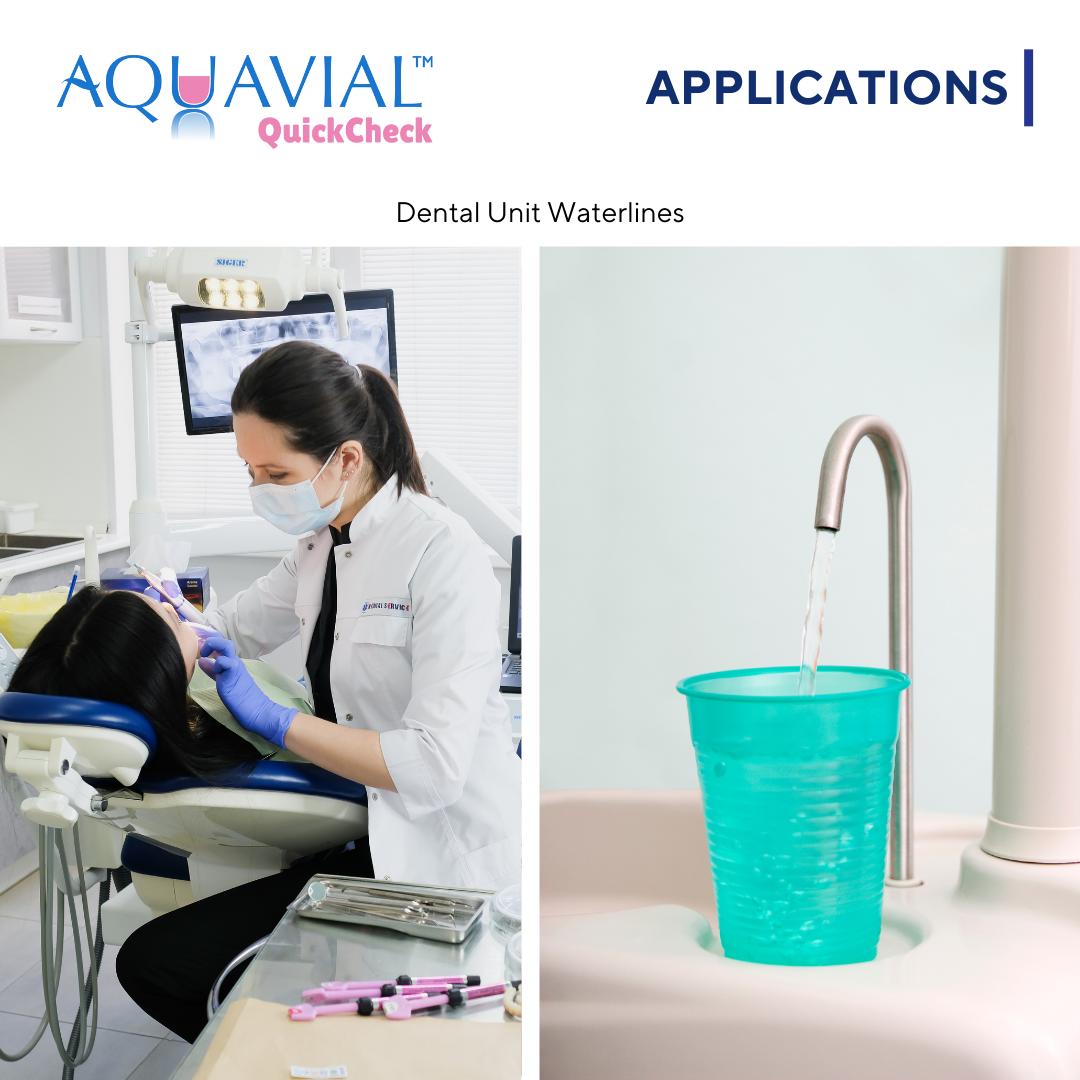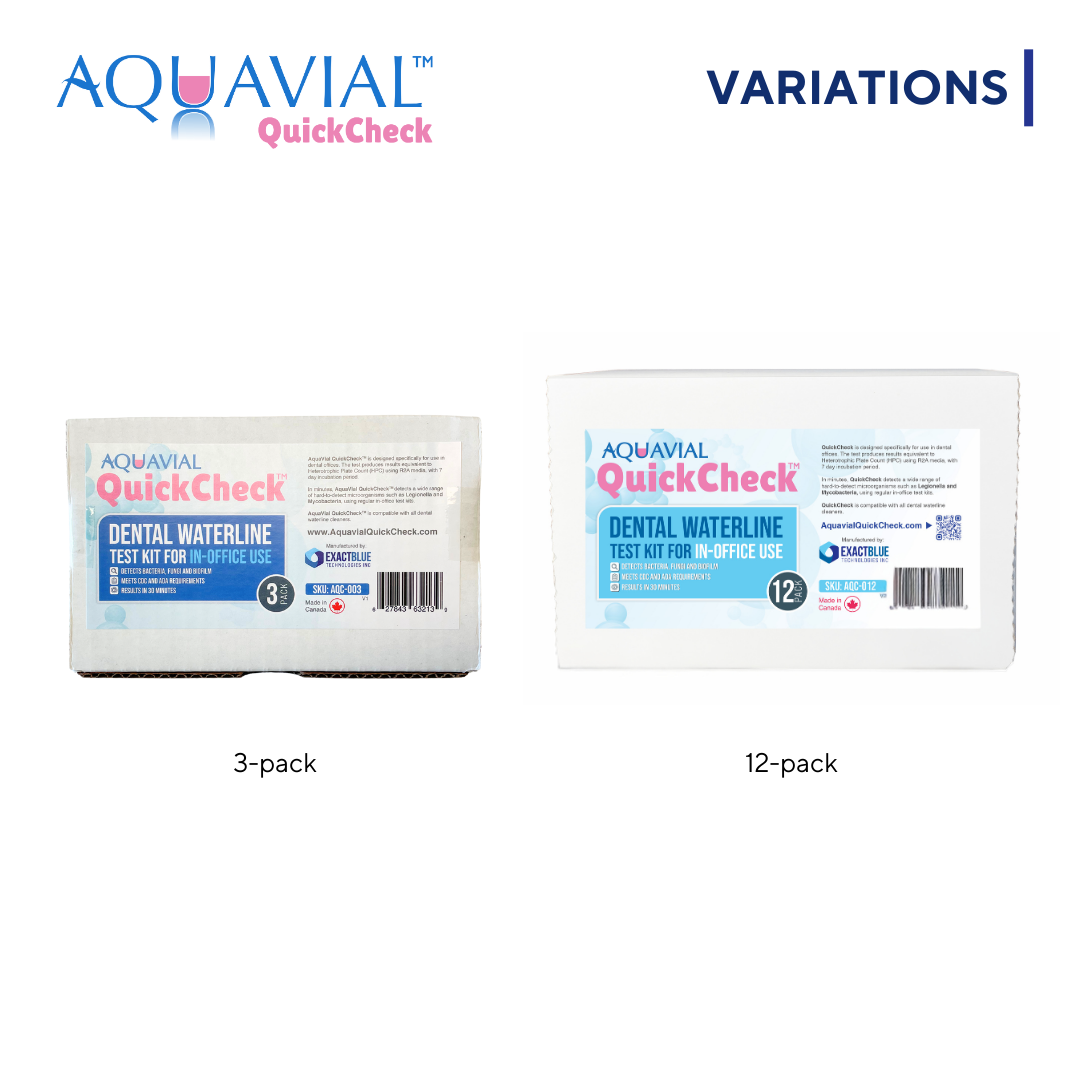1
/
of
4
AquaVial Quick Check - Dental Unit Waterline Test
AquaVial Quick Check - Dental Unit Waterline Test
Regular price
$144.00 CAD
Regular price
Sale price
$144.00 CAD
Unit price
/
per
Couldn't load pickup availability
FAST RESULTS: Advanced nanotechnology works using microbial cell wall surface recognition. Visual detection of bacteria, fungi, and biofilm in 15 minutes.
EASY-TO-READ: The reagent changes color from Pink to Light Purple when bacteria is present at a concentration of over 500 cells per ml (CFU/ml).
CONSISTENT RESULTS: The test produces consistent responses to a specific microbial strain, regardless of the type of water tested, or the dental waterline cleaner used.
| Description | Applications | Tech Specs | FAQ |
|---|---|---|---|
|
AquaVial Quick Check is a rapid in-office waterline test kit designed for dental offices to detect bacterial, fungal, and biofilm contamination in waterlines. It serves as an early warning system to ensure water safety for both patients and dental professionals, particularly during warmer seasons or after office closures. The kit uses gold nanoparticle suspension to interact with harmful microorganisms, producing a color change based on their concentration, eliminating issues like sample handling, transportation, and long incubation times found in traditional lab tests. With a detection limit of 500 CFU/ml and the ability to detect both culturable and non-culturable cells.
AquaVial Quick Check offers a quick, cost-effective, and accurate solution for maintaining safe waterlines. |
|
|
Q: What should I test?
A: Water samples should be taken from water sources used during patient treatment: handpieces, air/water syringes, ultrasonic and/or piezo scalers, and the cuspidor cupfill. Q: When should I test? A: Water testing should be done at the beginning of the day; after the waterlines have been flushed and the handpieces, air/water syringes, and scalers have been reattached, as per manufacturer’s instructions. Q: Which lines do I have to test? A: All DUWL’s. Air/water syringes, high-speed handpieces, cavitron, etc. Anywhere that potentially introduces water into the patient’s mouth should be tested. Start with the least used line. Q: Can I take samples from all the lines and do one test? A: No. Community tests fail to identify clean from contaminated lines. Q: Should I record the results of my test? A: Yes. Record the operatory, waterline, date, and validate with the clinician’s initials. |
Share








